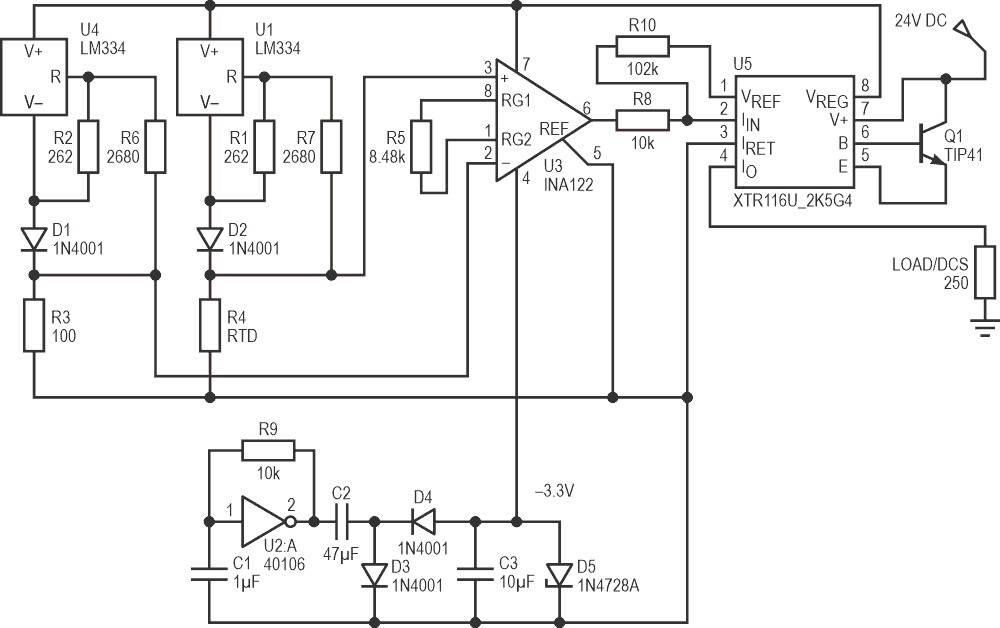Designing an analog circuit can be a frustrating experience, as noted by Nick Cornford in his Design Idea (DI), “DIY RTD for a DMM” (Ref. 1). With a fortnight’s struggle, I completed the design of 4 mA to 20 mA, two-wire temperature transmitter using a platinum resistance temperature detector (RTD) sensor, as shown in Figure 1.
In industrial processing applications, a two-wire topology is used to connect the temperature sensor in the field to the control room equipment, such as a distributed control system (DCS), programmable logic controller (PLC), or indicator. A 24-V DC supply is fed from the control room, and the current drawn is proportional to the temperature. Since the power and signal travel in the same pair of wires, this arrangement offers cable savings.
In Figure 1’s circuit, R4 is an RTD. As per the platinum RTD’s temperature versus resistance table (DIN EN 60751), R4 is 100 Ω at 0 °C and 212.2 Ω at 300 °C.
This circuit is designed for the range of 0 °C to 300 °C, where the load current will be 4 mA for 0 °C and 20 mA for 300 °C (you may change R5 to achieve other ranges). The current is proportional to the resistance of the RTD, which is slightly non-linear with respect to temperature. The accuracy claimed in this circuit is ±1%, which is adequate for many applications.
To avoid self-heating of the RTD, only 0.5 mA is sent through it. R1 and R2 must be adjusted to pass 0.5 mA in each limb. U1 and U4 are wired as zero tempco current sources. The difference in voltage between RTD (R4) and R3 is amplified in the instrumentation amplifier U3.
The RTD at 300 °C (or R4 at 212.2 Ω) sends 160 µA through R8. R10 sets the current through it as 40 µA. Hence, a total of 200 µA is sent as the input to the transmitter IC, U5.
U5 then amplifies this current by 100 to 20 mA and converts it into a two-wire format. The U2 circuit generates –3.3 VDC to feed the negative supply voltage pin of U3. Accurate results were only achieved when operating U3 with a dual supply. The RTD at 0 °C gives a 4-mA current at the output (LOAD).
Reference
- Cornford, Nick. "DIY RTD for a DMM."
